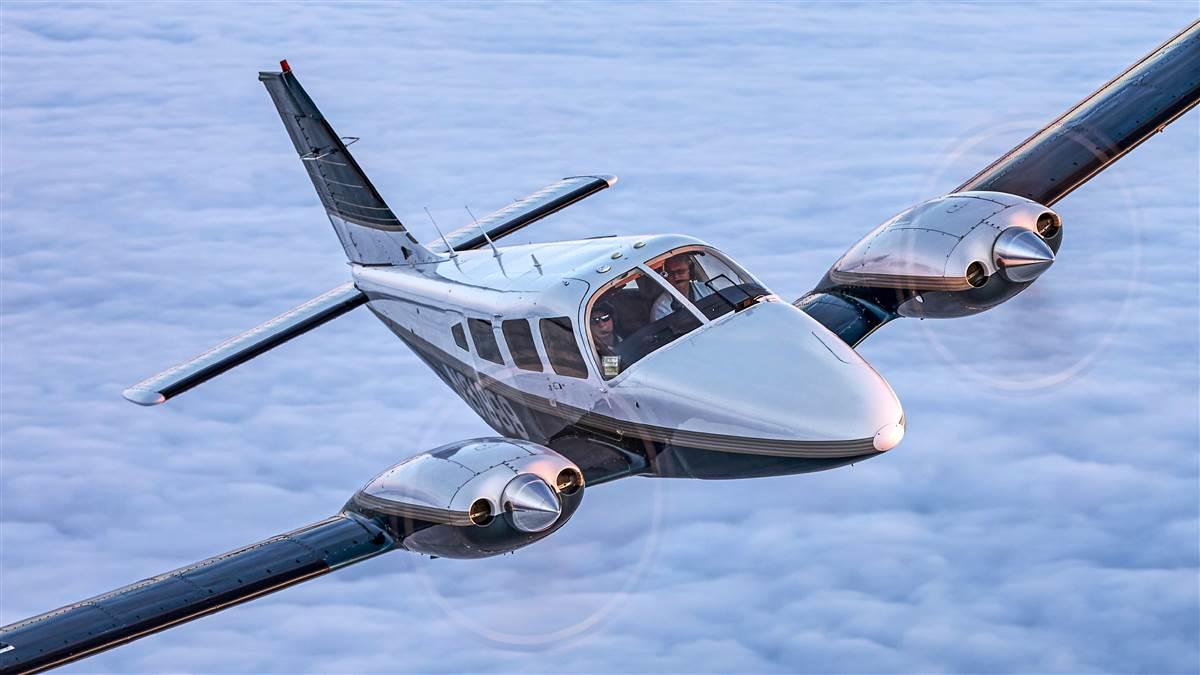Piston twin revival
Signs of life in a long-suffering market
A funny thing happened to the piston twin market on its way to oblivion.
It recovered. Or at least, it started showing signs of life.

Beechcraft B58 Barons, a bellwether for the long moribund category, have enjoyed a steady, two-year rise in valuations. And although the jump for twins isn’t nearly as steep as the white-hot market for high-performance singles, it’s notable because it reverses a long and seemingly intractable slide.
“Piston twins were the only soft place in an aircraft market that’s been going completely crazy,” said Jason Zilberbrand, president of VREF, an aircraft valuation and appraisal service. “The multiengine market had been beaten down so far that pilots with the right skill set couldn’t ignore it.”
Even with the recent jump in twin values, the VREF retail price for a 1979 B58 Baron, for example, is about $195,000—or $21,000 less than an A36 Bonanza ($216,000) manufactured the same year. Both airplanes have six seats and nearly identical internal dimensions. The main difference—for better or worse depending on your perspective—is the Baron’s second engine and propeller.
Traditionally, twin values suffer when avgas prices rise, and they’ve been rising meteorically of late. But so far, that hasn’t cooled the market for singles or twins.
There’s an unending argument about whether piston twins are safer than singles, and the data can be sliced, diced, and interpreted to support either answer. But the economics of multiengine ownership and operation are pretty well understood.
Twins typically climb faster, cruise at about the same speed, and consume about one-third more fuel over the same distance as a comparable single. Maintenance costs are significantly higher for twins, but how much varies widely depending on individual airplanes and owners.
Looking forward, there are many unknowns hanging over piston twins. Supply chain disruptions have vastly complicated aircraft maintenance and, in some cases, created long and frustrating periods of down time; avgas prices and availability are a question mark for the entire general aviation fleet, and a universal unleaded replacement hasn’t been identified; insurance costs and requirements have been rising across the board, and that unwelcome trend may continue.
New multiengine aircraft like the Diamond DA62 using diesel engines, or the Tecnam P2006T using auto-fuel-burning Rotax engines, are being produced, but they’re manufactured in such low volume that they’re unlikely to have a major influence on the legacy fleet. Similarly, Beechcraft only makes new Barons at a trickle of about one per month, and Piper’s production of PA–44 Seminoles is almost solely meant for flight schools. Fewer than 100 new FAA-certified piston twins have been produced annually in the last 20 years, down from more than 1,000 a year in the 1970s when they were last manufactured in quantity.
In sport aviation, the Lockwood AirCam, an open-air kit airplane originally designed for air-to-ground photography, has been selling especially well, and more than 300 examples have been produced. But they’re a niche product made for adventure and recreation, not transportation.
There are myriad explanations for the decline of the piston twin—although the rise of the single-engine turboprop is the most obvious. The Piper M600, Daher TBM series and Kodiak, Pilatus PC–12, and Cessna Caravan (and soon the Beechcraft Denali) have proved the efficacy of the once-controversial category. Also, where a multiengine rating was long considered essential for turbine pilots, the Cirrus SF50 Vision Jet has shown that pilots needn’t earn the rating at all to have a place in the jet world.
All this adversity would seem to paint a grim picture for the piston twin, but their adherents aren’t easily dissuaded. At a recent Bonanza Pilot Proficiency Program in Lakeland, Florida, several owners new to Barons came to learn the nuances of their airplanes from seasoned instructors.
One of the instructors, Waldo Anderson, a pilot who has flown, taught in, and administered FAA practical exams in Barons for decades, said the airplanes are simply too good to give up, and many have decades of life left in them.
“The bottom line is that Barons are just fantastic airplanes,” he said. “The more you fly them, the better you come to understand them and the more comfortable you get in them, it just dawns on you that they were way ahead of their time.” (See “Briefing: Here’s Waldo,” p. 43.)
Single-engine turboprops fly higher and faster and they’ve got a superlative safety record, yet they cost orders of magnitude more to acquire and operate—and turboprop prices have been surging.
Single-engine pistons go just about as fast and far as piston twins and they’re way more fuel efficient, but they lack the redundancy of a second engine—and that’s something multiengine pilots miss, especially over rugged and remote regions.
“You can cite safety statistics about singles versus twins all day long,” Anderson said. “But if I’m in an airplane and things start hitting the fan as they sometimes do, I’d much rather be in a Baron than any single.
“The Baron’s a robust, proven platform that gives me the tools I need to get back on the ground safely. I’m comfortable in it, I like the sound and feel of it, and it’s just a hell of a lot of fun to fly. Let’s face it, flying has just got to be fun or there’s really no sense doing it.”



